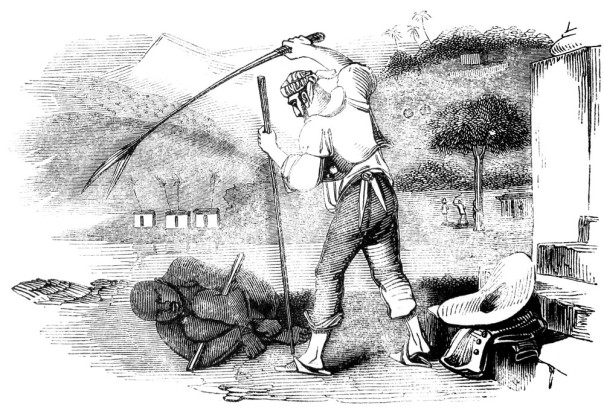This artilce is taken from:
Pictorial Times, “A Weekly Journal of News, Litrature, Fine Art and the Drama”, Vol. 1 March 18 – August 19 1843, p211-213, Saturday June 17 1843. “Engravings by Henry Vizetelly and Others”.
This article was found in Bristol Central Reference Library. If you wich to use any of the pictures please contact them: refandinfo@bristol.gov.uk.
THE GREAT ANTI-SLAVERY CONVENTION.
This great Convention, composed of delegates from almost every land, assembled on Tuesday last at the Freemasons’ Tavern. Upon the feelings which the contemplation of such an assembly is calculated to excite we have expatriated in our first page. The purpose of the British and Foreign Anti-Slavery Society is to banish slavery and the slave trade from the face of the earth. The following declaration is the society’s charter, viz. :- “That so long as slavery exists there is no reasonable prospect of the annihilation of the slave trade, and of extinguishing the sale and barter of human beings; that the extinction of slavery and the slave trade will be attained most effectually by the employment of those means which are of a moral, religious, and pacific character; and that no measures be resorted to by this society in the prosecution of these objects but such as are in entire accordance with these principles.” Under governments nominally Christian there are more than three millions and a half of human beings who know not the blessings of freedom. In Africa and Asia the curse of slavery afflicts untold numbers of our common race, and the star spangled banner of America floats over nearly three millions of slaves. Nearly a similar number are lashed and goaded, and bought and sold in Brazil. Cuba. and Puerto Rico contain 600,000 of slave victims; the French and Dutch colonies, and, above all, British India, contain millions who wear slavery’s badge; and for the destruction of the laws which sanction the sin of slavery the Convention has met. They know that “there is a law above all the enactments of human codes. It is a law written by the finger of God in the heart of man; and by that law unchangeable and eternal, while men despise fraud, and loathe rapine, and abhor blood, they shall reject with indignation the wild and guilty phantasy that man can hold property in man.”
When the Convention met on Monday, it was stated that Mr. Clarkson’s state of health would not permit him to attend; but Mr. Sturge read him a comprehensive review of the progress the cause of abolition has made in England, France, Spain, Portugal, Holland, Denmark, and Sweden, in the Mediterranean, in the United States, and in Russia. “ Such, my friends,” said Mr. Clarkson, in adverting to the success that had attended the friends of emancipation, “has been the wonderful progress of our cause. Nine different nations, which include all the European powers which have foreign colonies, have abolished the slave trade; three of which have abolished, or are apparently on the eve of abolishing, slavery also. What is the lesson which we should learn from this state of things? We ought to derive from it encouragement or courage to proceed with fresh vigour in the great work to which we have been this day called. My motto has always been ‘Go on,’ regardless of difficulties. But I think that we should derive encouragement from another consideration, for I cannot help thinking that it is within the design of Providence that the evil, both of slavery and the slave trade, should be swept from the face of the earth, and that He has been working, and is now working, to this effect; and that this is to be done by human agency; and if so, that we are His instruments. The finger of God, I think, is now visible in the work. How else should it have happened that the rulers of so many nations, differing in language, customs, modes of thinking, and religion, and in some instances hostile to each other (and one of these potentates a heathen), should have come, all of them into this same measure; and this a measure, too, apparently, though not really, against their own interests. I have only now to say, as far as relates to myself, my earnest desire is that God may be present with you in your deliberations, and assist them, and bless them, and that you may return home in health and safety to your families and friends. Feeling that my general career is drawing to an end, it cannot but be pleasing to me to have lived to see that our triumph is advancing. That work which one of the departing generation begun will be I trust, accomplished by you of the rising one; for the same Power which blessed the beginning will not withhold His support from the end; and therefore I now say farewell, and in that beautiful word I include my prayer for the blessing of God on all that concerns you both temporally and spiritually (loud cheers).
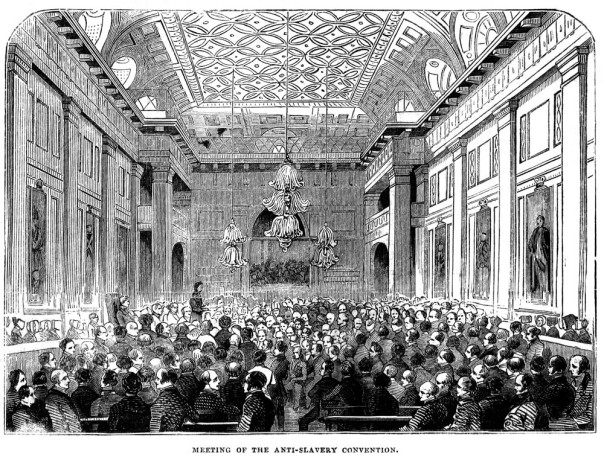
After some routine business, the report of proceedings consequent on the Anti-Slavery Convention of 1840 was read. On the motion of the Rev. Burnett, seconded by the Rev. John Leavitt, of Boston, U. S., the report and papers accompanying it were adopted. The Rex. W. C. Pennington (of African descent) next addressed the Convention. He said the coloured population of the United States were not, and never had been, reconciled to slavery, and never could be unless it were possible to divest them of humanity. At the evening sitting, the chair was taken by Mr. Gurney, and a report of the spread of the anti-slavery cause since the last Convention was read. Some remarks on the subject of the Creole concluded the report, which was listened to throughout with deep attention. Mr. Scobell remarked, that since he had entered the room a copy of the Ceylon Observer had been put into his hands, and he was enabled on that authority to announce that slavery had been abolished in that beautiful island. J. T. Price, Esq, moved as the first resolution – “That this meeting, in receiving the report of the progress of the anti-slavery cause since the last Convention, is called to unite in devout thanksgiving to God for all the happy and beneficial results which have now been announced, and for the sound Wisdom and discretion, and persevering self-denying zeal with which He has enabled the British and Foreign Slavery Society to prosecute the work and objects assigned to them by that Convention.” The Rev. Thomas Morgan, of Birmingham, the Rev. Thomas Lovatt, the Rev. James Peggs, John Sands, Esq., James Standfield, Esq., and several other delegates spoke in support of the resolution. The Chairman, before submitting the resolution, remarked that he had had much experience in public meetings, but he had never heard a report more thoroughly satisfactory. In point of successful operations the proceedings detailed were almost unprecedented. Mr. Joseph Alexander submitted that the thanks of the Convention were due to the present Government for the steps they had taken for the abolition of slavery in British India and various other places(hear, hear). The Rev. J. Evans entered at great length into an exposition of the horrors of the system of slavery as practised in America, and gave a statement of the comparative growth of the slave trade in the different states of that country. The Convention then adjourned.
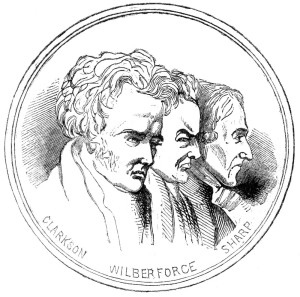
VARIOUS INSTRUMENTS OF TORTURE.
The border which partly surrounds this page is formed of engravings representing several whips, chains, &c., which are deposited at the offices of the British and Foreign Anti-Slavery Society in London. The chains for coupling the slaves vary in length from two feet to nine. Another chain, used for tethering the negroes to any particular place, is about four feet long. And amongst the whips is one for the use of ladies, with which to flog their slave attendants. Another of the whips is eight feet long, and the Brazilian whip is about half that length, made of platted thongs, and tapered to a point from the handle. There are also rods made of vine branches, with which most terrible punishment is inflicted. The leg fetters exhibited weigh about three pounds, and there is a specimen of an iron collar, filed off the neck of a runaway slave at Trinidad, which must have kept the poor creature in great and incessant pain. The round pieces of wood, with handles, which are shown in the opposite page, are called palmatoria. They are made of the hardest wood, and weigh about a pound, and are used to strike the slaves on the palm of their hands. The application of thumb-screws is another part of the atrocious system of Brazilian cruelty. The screws— of one of which also we give an engraving— are, like the chains, the fetters, the gags, and the neck collars, made mostly in Birmingham. These tortures are applied indiscriminately to females as well as to men. The horrible narrative we have given is so revolting that it is almost impossible to believe it true. But a reference to “Debret’s Voyage to Brazil” will prove that the catalogue of horrors might be increased to a far greater length; and “Bourne’s Picture of Slavery in the United States” contains far more startling descriptions of the impious and harrowing atrocities of the slave trade in “free” America.
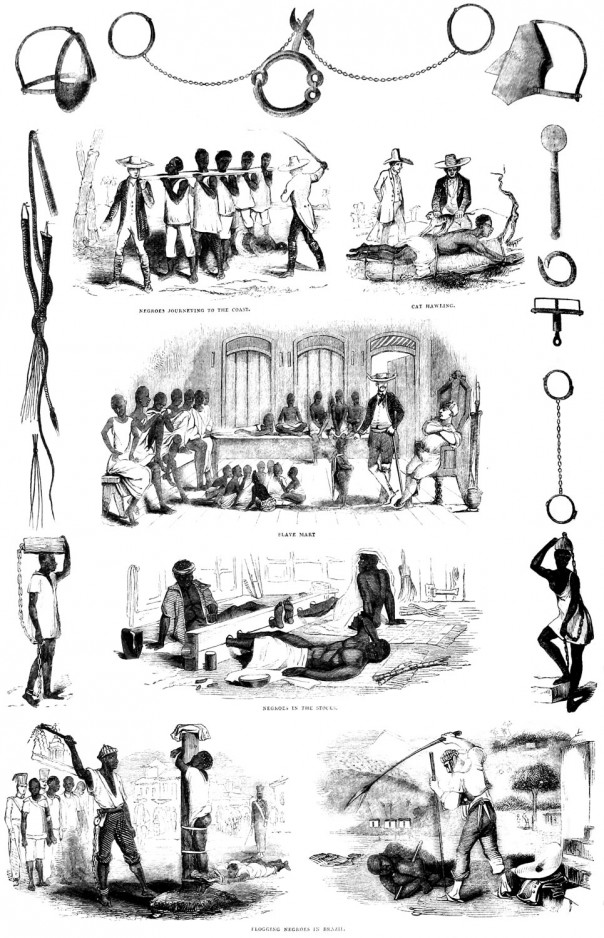
Saturday June 17 1843 p212
IRON GAGS AND MASKS.
These gags are made of iron or tin. A piece of iron in the inside, about an inch and a half long and an inch wide, protrudes into the mouth, preventing the slave from either eating or talking. The iron plate which covers the chin is perforated with several small holes for respiration, and the whole is firmly fixed on the head by a rivet or lock. A mask of another kind, made of tin, entirely covers the face. These masks are used to prevent the shaves from eating dirt-a habit to which they are prone under the awful gloom and moodiness which the severity of their doom occasions. The tin mask is represented on the tight, and the iron one on the left side, at the top of the preceding page.
THE IRON COLLAR AND RUNAWAY.
The punishment of the iron collar is inflicted upon such negroes as run away; and any negro wearing one of these, and found in the towns, is Immediately apprehended by the police and sent to prison until restored to his owner. There is also a rural police, who wear no uniform, and whose duty it is to watch for fugitive negroes. For apprehending one they receive from the master 4000 reis, or about a guinea English money. Of this iron collar a specimen is given in our engravings, in the centre, at the top of the page. The one we have drawn has only one prong or branch; some collars have two or more. The object of these branches is to mark out the runaway slave, to embarrass his progress through the bush, and to afford facilities for subduing any resistance he may offer to those who may capture him. By pressing upon the branch or prong, the captor almost strangles and the runaway, and is at length compelled to yield, The collar, of which we have given representation, weighs 5 1/2 lbs. These collars are riveted on the neck, and are sometimes worn for many years. Dr. Walsh, in his “ Notes on the Brazils,” says – “Besides the punishment of flogging, an iron collar is firmly riveted on their necks, from which a long bar projects nearly at right angles, terminated at the other end by a cross, or by a broad curl.” “ The multitude of slaves,” he adds, “ seen thus neck-fettered in the streets, is a proof of the numbers who are continually attempting to escape, and also a proof of how intolerable the state of existence in which they find themselves.” find themselves.” Recent authorities confirm generally the statements of Dr. Walsh.
NEGROES GOING TO THE COAST.
Negroes, when caught, are conveyed to the coast for shipment. No sooner are they taken, than, independent pangs they feel at being forcibly carried off (for “ affection dwells in black and white the same”), they begin to experience the system of torture which is to accompany them to the grave. The coffle is an instrument which couples them together by the neck, as in the accompanying engraving; and in this harassing position they, are marched, under many other privations and cruelties to the sea, where they are put on board a slave-ship. There are various other kinds of “coffles.” Sometimes the hands of two negroes are fastened together, and then both are attached to a long chain, to which sometimes as many as 100 are linked. This is an “United States” practice.
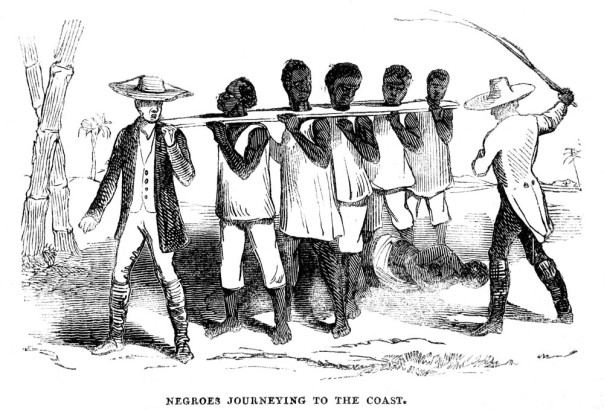
PUNISHMENT OF CAT-HAWLING.
A resident in America says- “ When I was a boy, on a short ramble from my father’s house a I encountered a neighbouring farmer, who had a coloured citizen tied to a large log or tree lying on the ground. The man was lying on his face uncovered from his neck downwards. His driver had been lacerating him most mercilessly, until his back was one mass of blood and flesh cut up pieces, which were commingled and slowly amalgamating together. To complete the tortures of his wretched victim, who could scarcely move on account of the tightness with which his hands, feet, and neck were tied to a tree, the citizen slaver caught a large cat and so fastened the animal that, in endeavouring to get lose, its claws continually tore the slave’s already gory back, until the villain’s vengeance was glutted, when he released the cat, administered the usual plaster, salt, pepper, vinegar, &c., and ordered the son of anguish to resume his labour.” Well might the witness of such a specimen of American freedom declare “My heart sickened.”
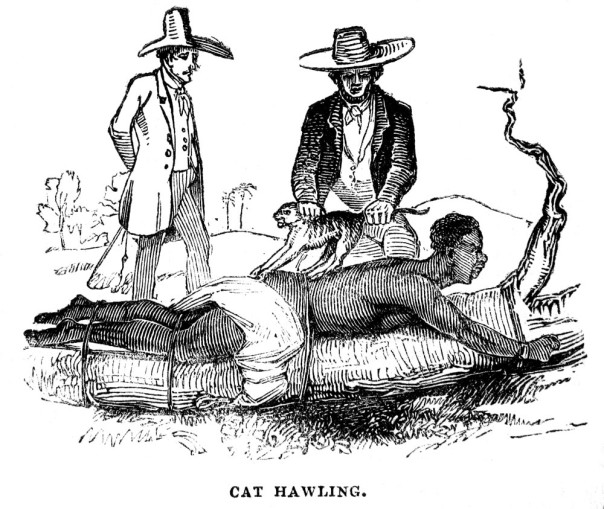
NEGROES IN THE STOCKS.
The key of the lock of the stocks is kept by the manager of the negroes, who are fixed in this instrument of cruelty by the legs, the hands, or even the neck. Negroes are put into the stocks previous to undergoing heavier punishment; and those considered to be incorrigible are kept in them until they can be sold to work in the mines.
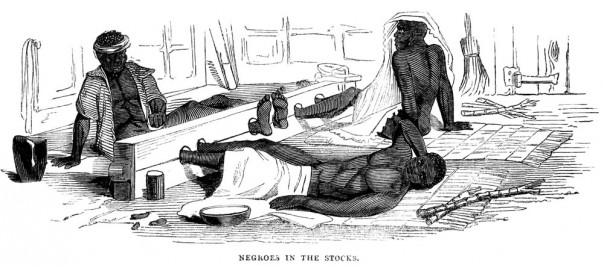
MART FOR THE SALE OF NEGROES.
The above [below] mart is in the Val Longo at Rio Janeiro. It is more like a den for wild beasts than a habitation for human beings. The groups of negroes in the accompanying drawing belong to two different proprietors, and they are distinguished by the colour of the stripes of coarse serge which they wear. The price of a negro varies from 1800 to 2400 francs; a healthy negress is worth more, and a young negro costs from 640 to 800 francs.
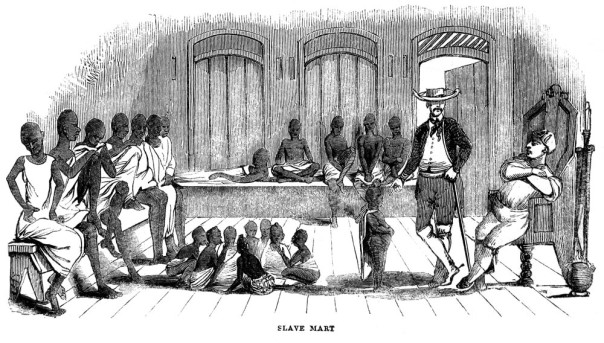
THE LOG AND CHAIN PUNISHMENT.
This punishment is applied chiefly to young slaves. The lightest chain used Weighs from five to six pounds. One end is attached to the ankle, and the other to a log of wood, which either drag after him, or carry it on his head. This punishment is much used for females, and some of them are doomed to wear a chain of about half a hundred weight. Nor is this cruelty confined to Brazil, for Captain Steadman found the same plan of torture followed in Surinam. He says the first object which presented itself on his landing “was a young female slave, whose only covering was a rag tied round her loins, which, like her skin, was lacerated in several places by the stroke of the whip. The crime which had been committed by this miserable victim of tyranny was the non-performance of a task to which she was apparently unequal, and for which she was sentenced to receive 200 lashes, and to drag during some months a chain several yards in length, one end of which was locked round her ancle [sic.], and to the other was affixed a weight of at least one hundred pounds.” Captain Steadman published the following sketch of the victim.
FLOGGING NEGROES IN BRAZIL.
Permission is given by the inspector of police to the slavemasters to flog their negroes. They may, at their option, inflict from fifty to two hundred lashes. Almost daily a gang of them, chained together and guarded by the police, are led forth to suffer in some of the public parts of the town, and the man who administers the punishment receives about two shillings for every hundred lashes he inflicts. On their return to prison the wounds of the slaves are bathed with vinegar. Cases have occurred in which the negroes have been literally flogged to death; but the details are so disgustingly horrible that we refrain from further reference to them. The lashes of the whips used are very hard and dry; when softened with blood the executioner lays them aside and takes another. The four negroes on the left in the accompanying picture are waiting their turn to be tied to the post, and the two on the left, who are prostrate, have already undergone the torture. They are compelled thus to lie down, in order, in some degree, to check the effusion of blood. Such is the intensity of their suffering, that frequently, when the negroes are loosed from the whipping-post, it is covered with the sweat of the convulsed and writhing victims who have been tied to it.
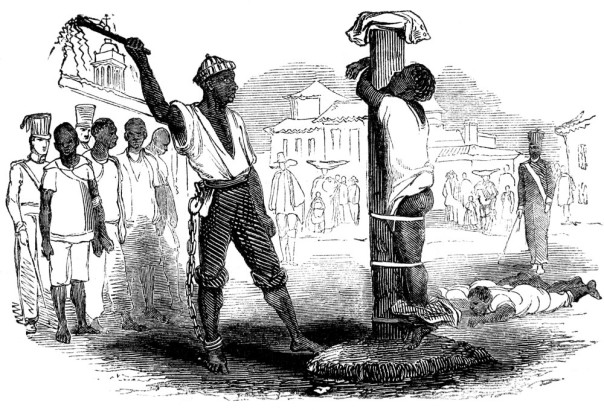
ANOTHER BRUTAL PUNISHMENT OF NEGROES.
The unfortunate creatures subjected to the above kind of punishment have first to submit to their hands being bound, which are then brought over the legs. The manager, or feitor, then passes a stick under the negro’s knees, and thus the poor wretch is completely trammelled. By a kick from the inflictor of the torture, the negro is easily turned over, and lies in a posture which enables the savage monster to indulge his inhuman fury. Scarcely dare the negro pray for mercy, or if he does, he is only replied to with orders to hold his tongue. Frequently, when lacerated on one side, his body is kicked over, that the other side may be similarly mangled. When the feitor doubts the hard-heartedness of the man who inflicts the stripes, he places behind him another negro with a chicota or whip, and if the former does not inflict the punishment with sufficient severity, he is himself flogged by the latter. Sometimes the manager himself, with a whip, takes his place behind the second negro to punish him also if he permits any relaxation of cruelty to take place on the part of the men before him.
